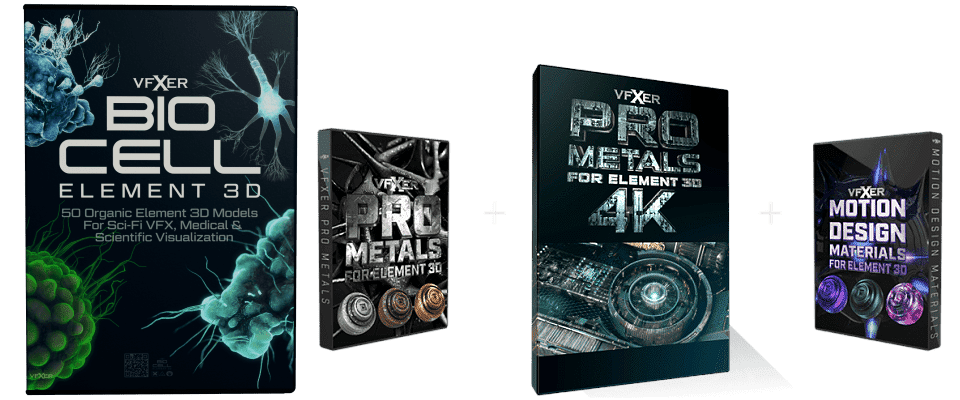Element 3D Tutorial: Create a Massive Alien Ship VFX Shot in After Effects
If you've been searching for a practical Element 3D tutorial to create a cinematic alien ship VFX shot, look no further. The team at Film Riot recently broke down their entire workflow for creating that epic spaceship shot from their universe pack promo. This guide explains their process, from building custom Element 3D models from scratch to final compositing in After Effects.
This isn't just another abstract tutorial; it’s a masterclass in creating high-quality sci-fi VFX efficiently. It's a workflow designed for pros who need to produce impressive visuals, especially for pitch reels, without getting bogged down in weeks of development.
Building the Alien Ship: A Fast Element 3D Model Workflow
The most impressive part of the Film Riot breakdown is that the ship model was created entirely inside Element 3D. Ryan Thompson designed a powerful-looking ship using a surprisingly simple method that any artist can follow.
- The Core Model: The foundation of this Element 3D model is a simple Torus primitive. By rotating it and stretching its Y-scale, it forms the unique, elongated chamber shape. The resolution is then increased by upping the sides and segments for a smooth, high-poly look.
- Texturing and Materials: For texturing, the team used a preset from the ProShaders 2 pack. The key to selling the effect was customization. They tweaked the glossiness map levels to create more detailed highlights and adjusted the UV repeat values on the model itself. This small change in texture scaling is crucial for conveying a massive sense of scale for the spaceship VFX.
- Realistic Reflections: To properly integrate the alien ship VFX, the default environment map was replaced. They chose a cold, dark map that matched the space environment, which is essential for creating believable reflections on the ship's metallic surface.
After Effects Tutorial: Compositing Your Spaceship VFX
Once the Element 3D model is ready, the next step is bringing it into a scene. This part of the After Effects tutorial focuses on creating the initial shot with a few fundamental techniques.
- Scene and Camera Setup: The background is a 3D planet layer. A wide 24mm camera was used to create more dramatic parallax with camera movement. A subtle orientation keyframe on the camera allows it to follow the ship's descent, creating a smooth, cinematic feel.
- Element 3D Animation and Lighting: The ship's movement is animated using Element's World Transform controls. For lighting, a few point lights are strategically placed to create highlights and define the ship's form. A critical pro-tip from the video: ensure "Accepts Lights and Shadows" is turned off for your background layers to isolate the lighting to just your ship.
- Finishing the Composite: To finalize the shot, a standard VFX artist's finishing pass is applied. This includes a Curves effect for contrast, a slight Fast Blur to soften the sharp CG edges, and enabling Motion Blur for all moving layers to integrate the alien ship VFX naturally.
Advanced Technique: Integrating Your Element 3D Model into Footage
The real power of this workflow is using the finished alien ship VFX asset in different scenes, perfect for building a custom pitch reel. This process demonstrates an advanced Element 3D workflow for compositing into live-action plates.
- 3D Tracking in After Effects: First, run a 3D camera track on your new background footage to solve the camera's movement.
- Integration and Animation: Copy your Element 3D layer into the new comp. Adjust the scale, position, and rotation to match the tracked camera, then animate a new flight path that feels motivated by the scene.
- Custom Reflections: This is the most important step for realism. Add your footage as a custom texture map in Element 3D and apply it as the environment map. This ensures the reflections on the ship accurately match the scene it's flying through.
- Atmospheric Matching: Use Element's Fog settings to match any haze or fog present in the footage. Adjust the color, distance, and strength until the ship sits perfectly in the atmospheric depth of the scene. You can enhance this further by adding stock smoke or cloud elements.
- Final Grade and Polish: Complete the integration with shot-specific lens flares (like those from Red Giant's Real Lens Flares) and a final color grade to unify the Element 3D model with the plate.
This entire process shared by Film Riot is a fantastic, real-world Element 3D tutorial that goes beyond the basics. It’s a practical guide for creating stunning alien ship VFX and shows how to leverage these assets to build powerful, specific pitch materials that get projects greenlit.



